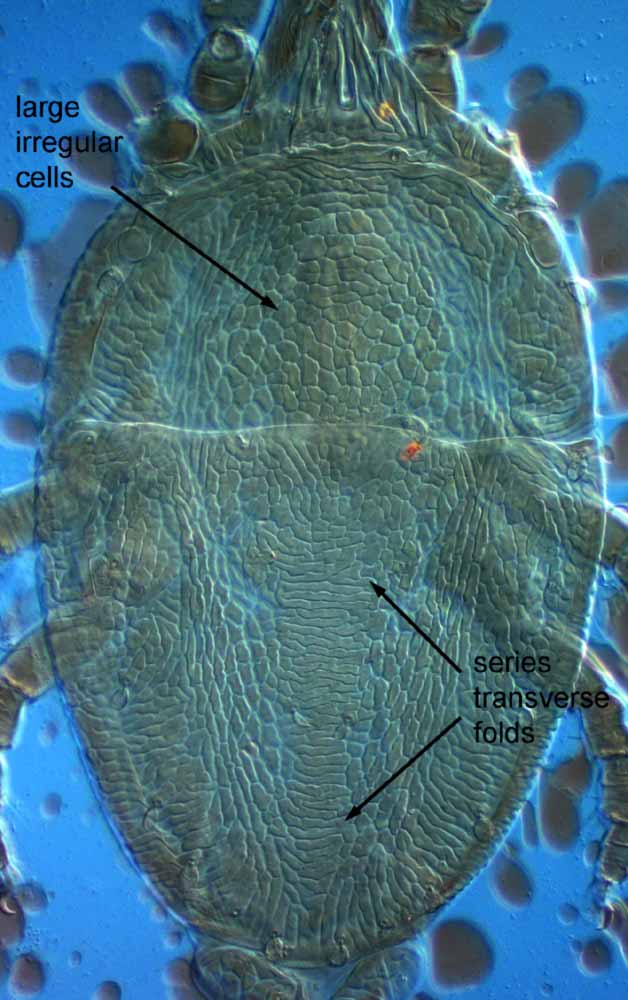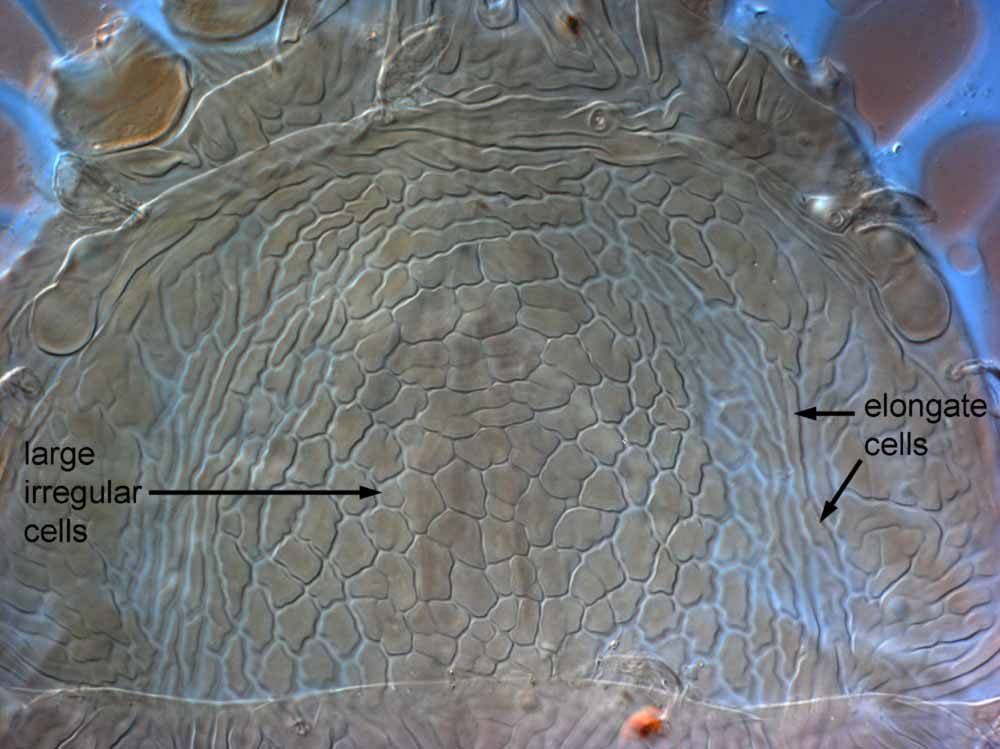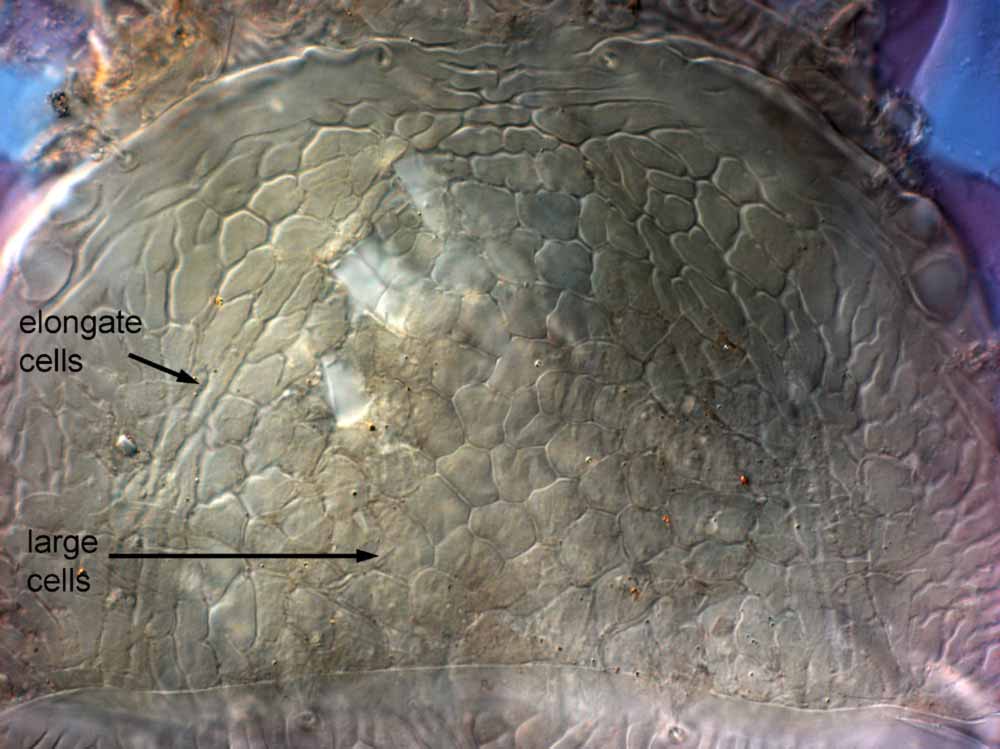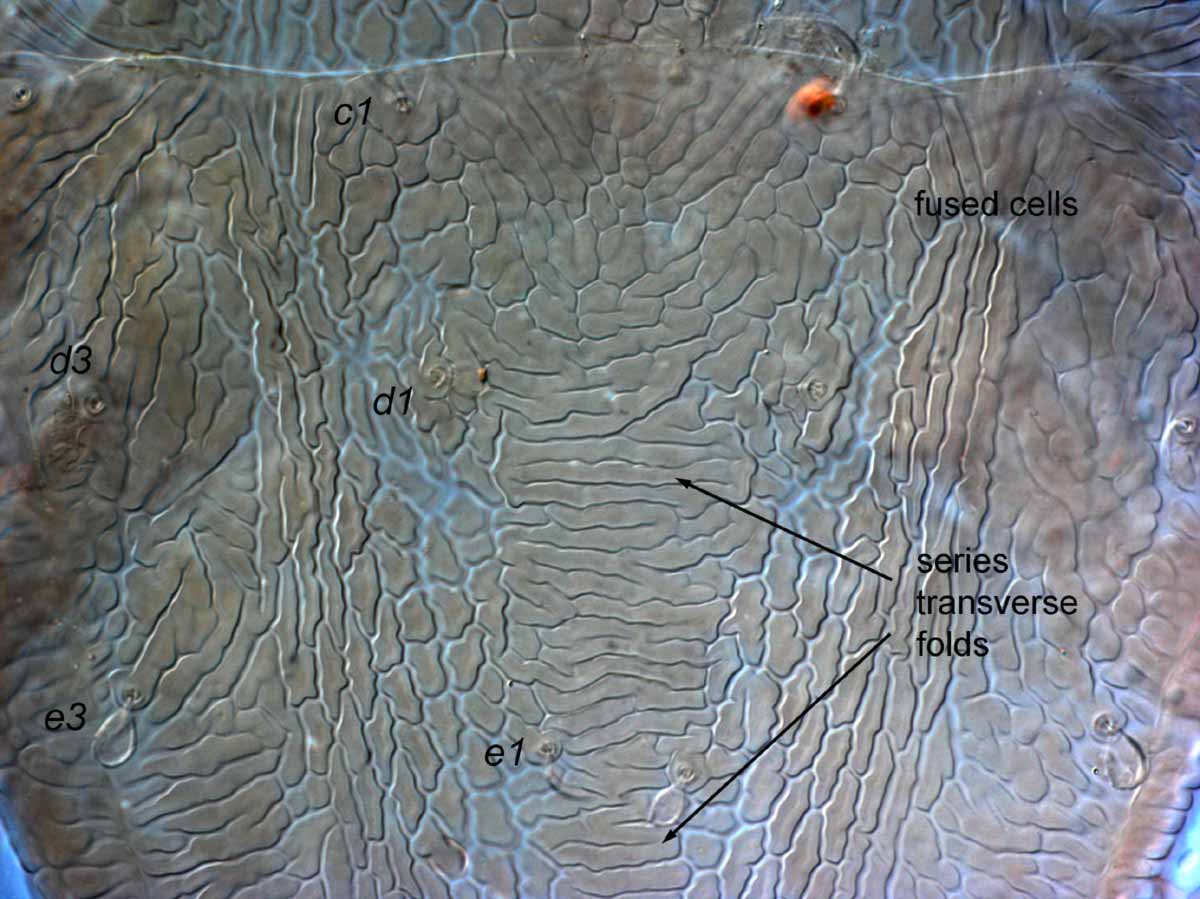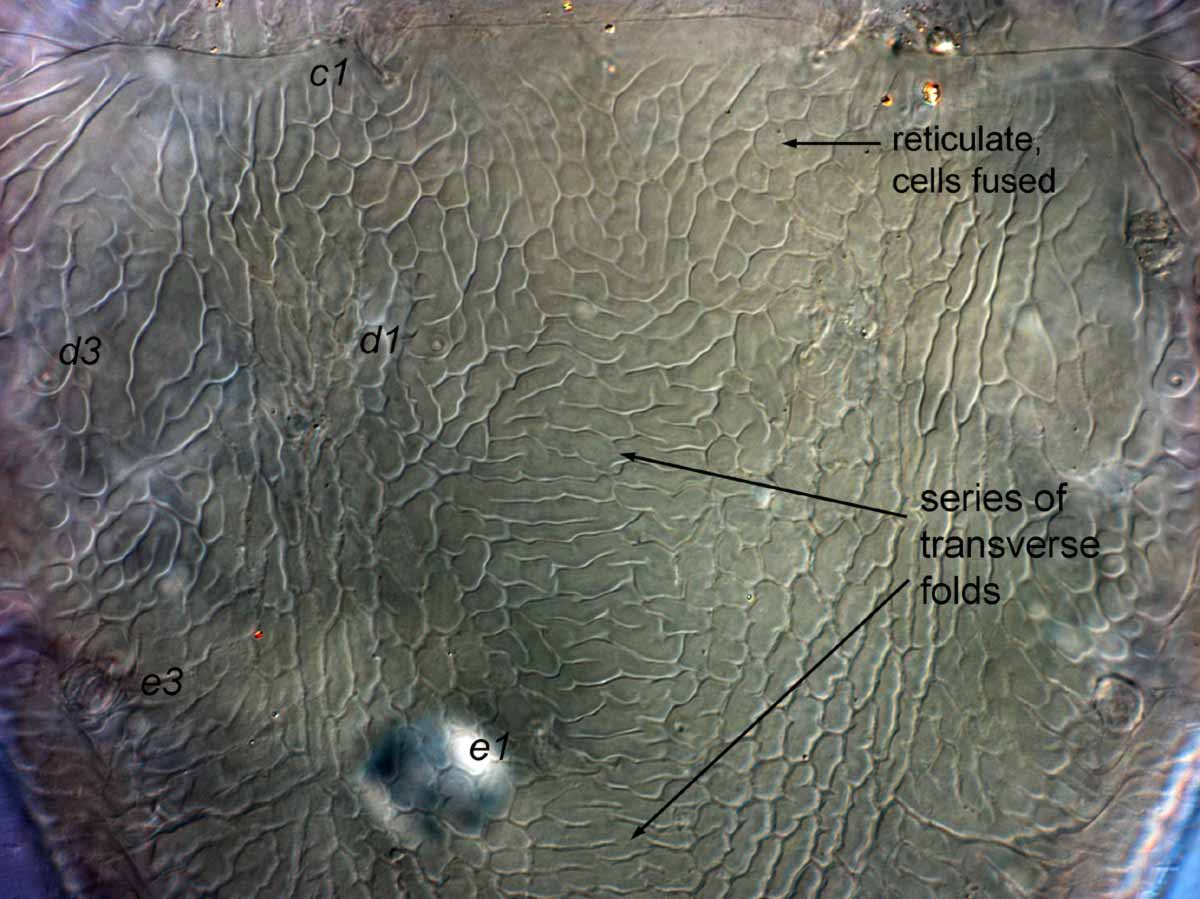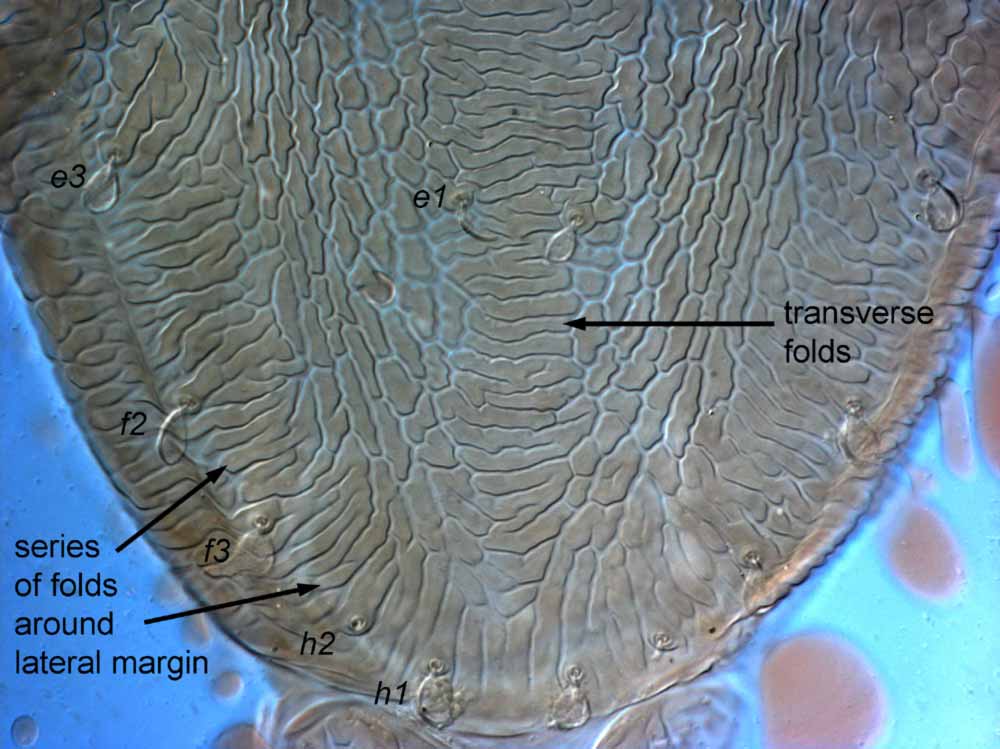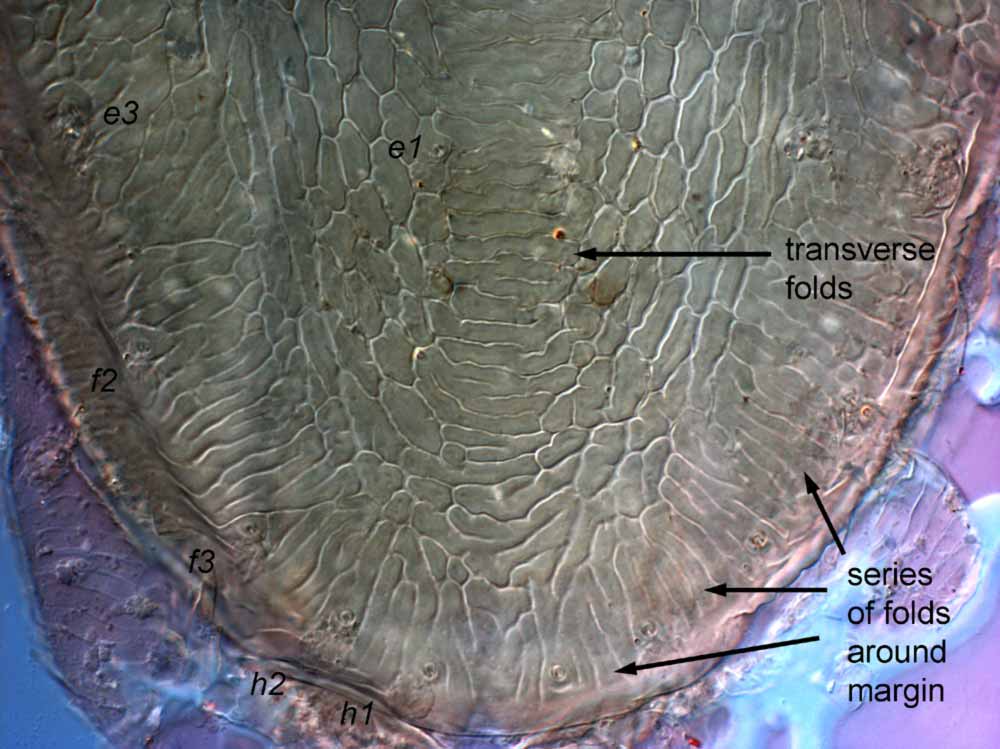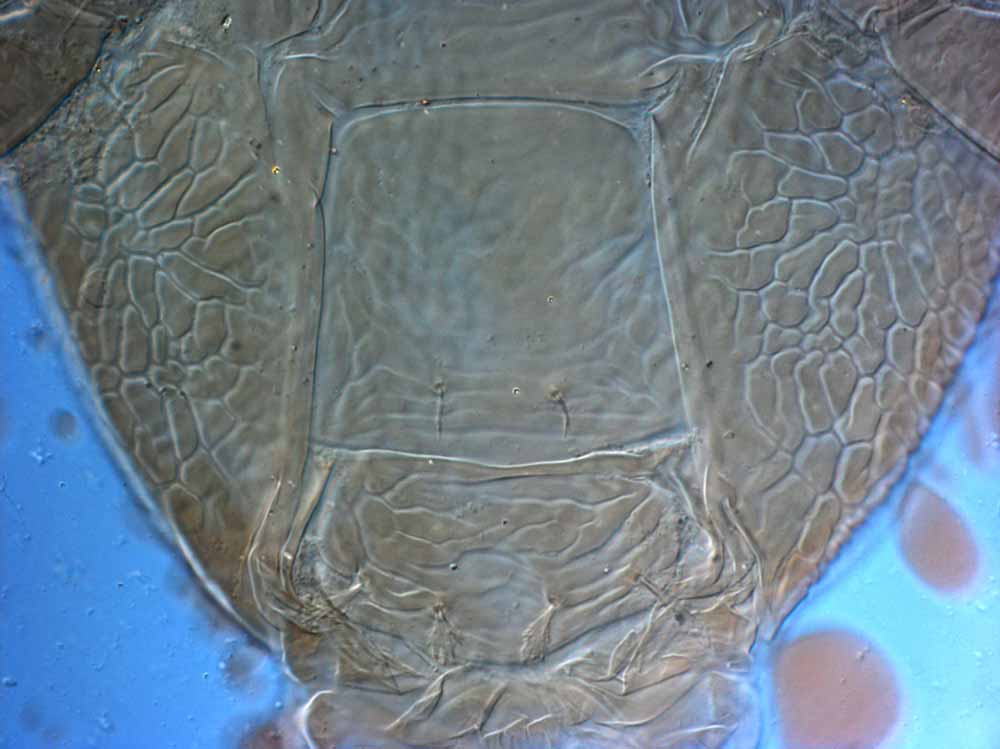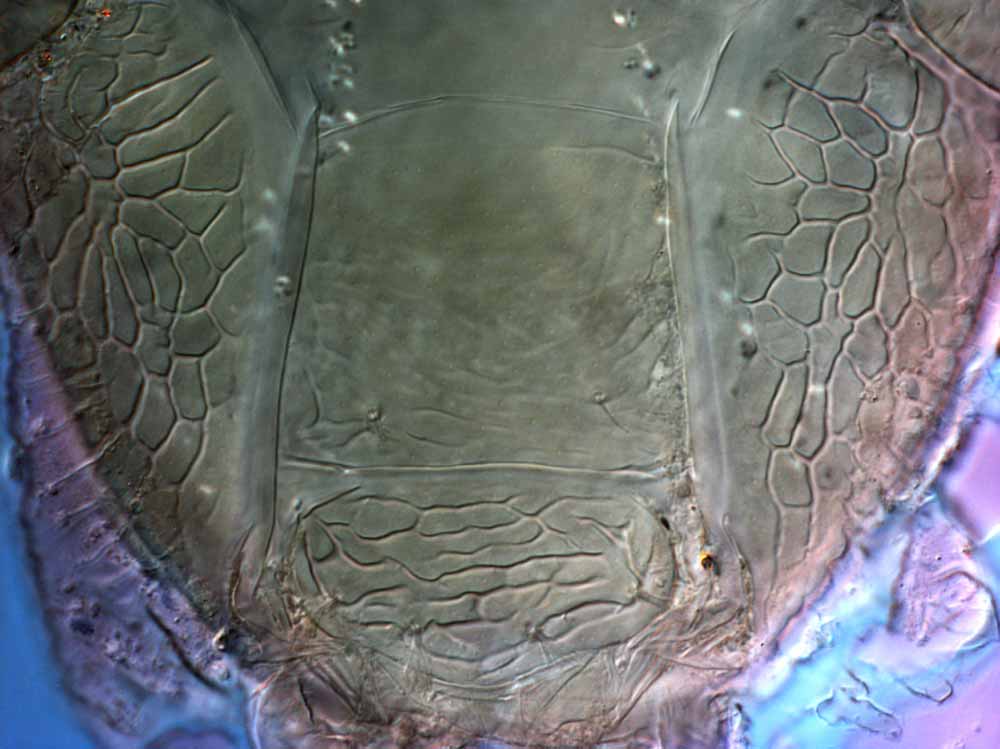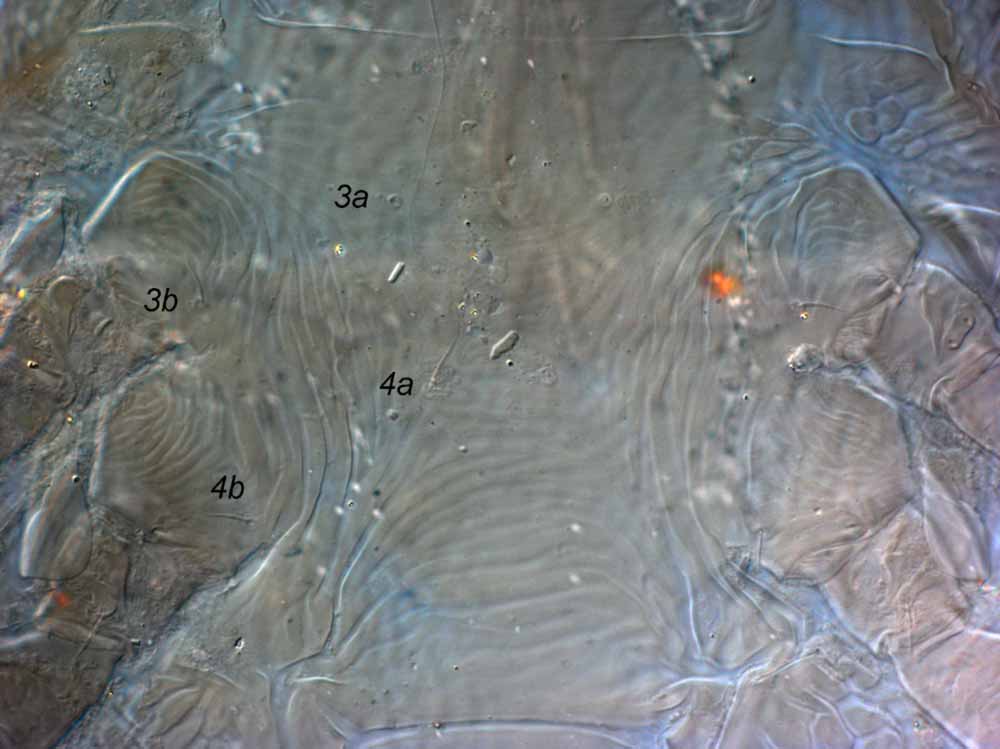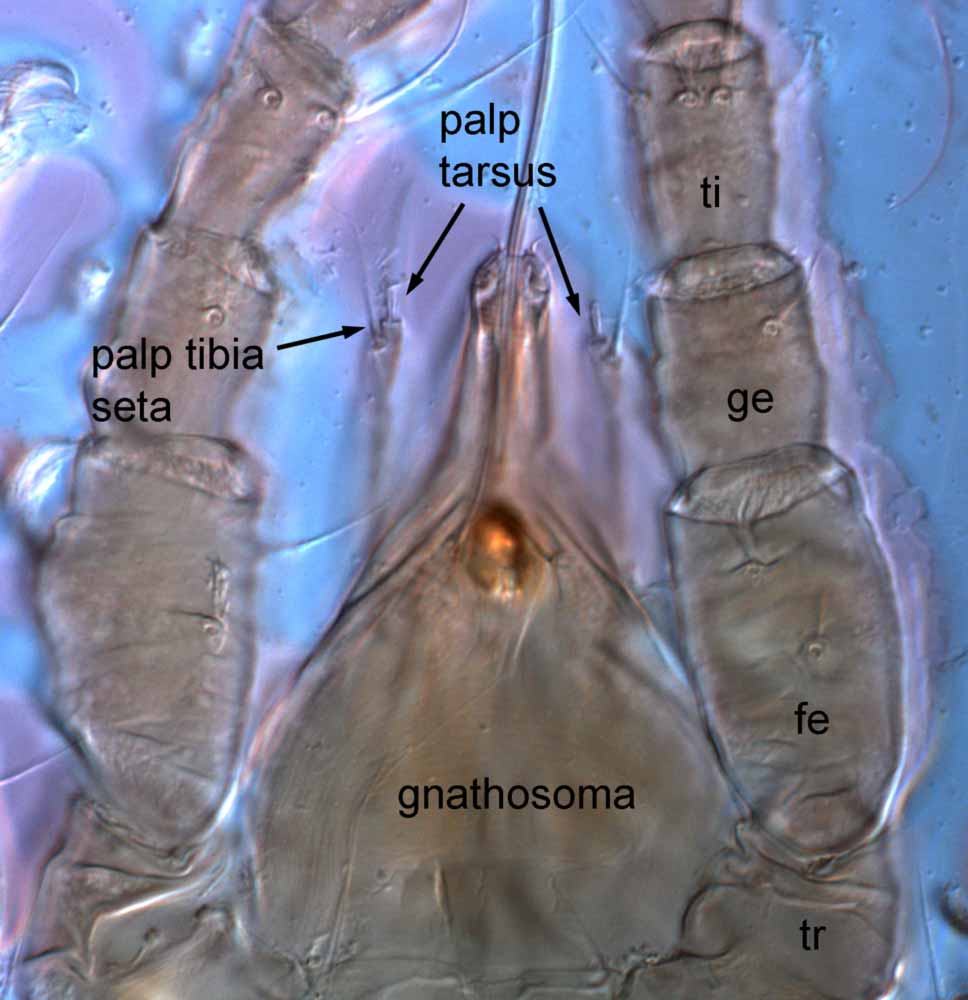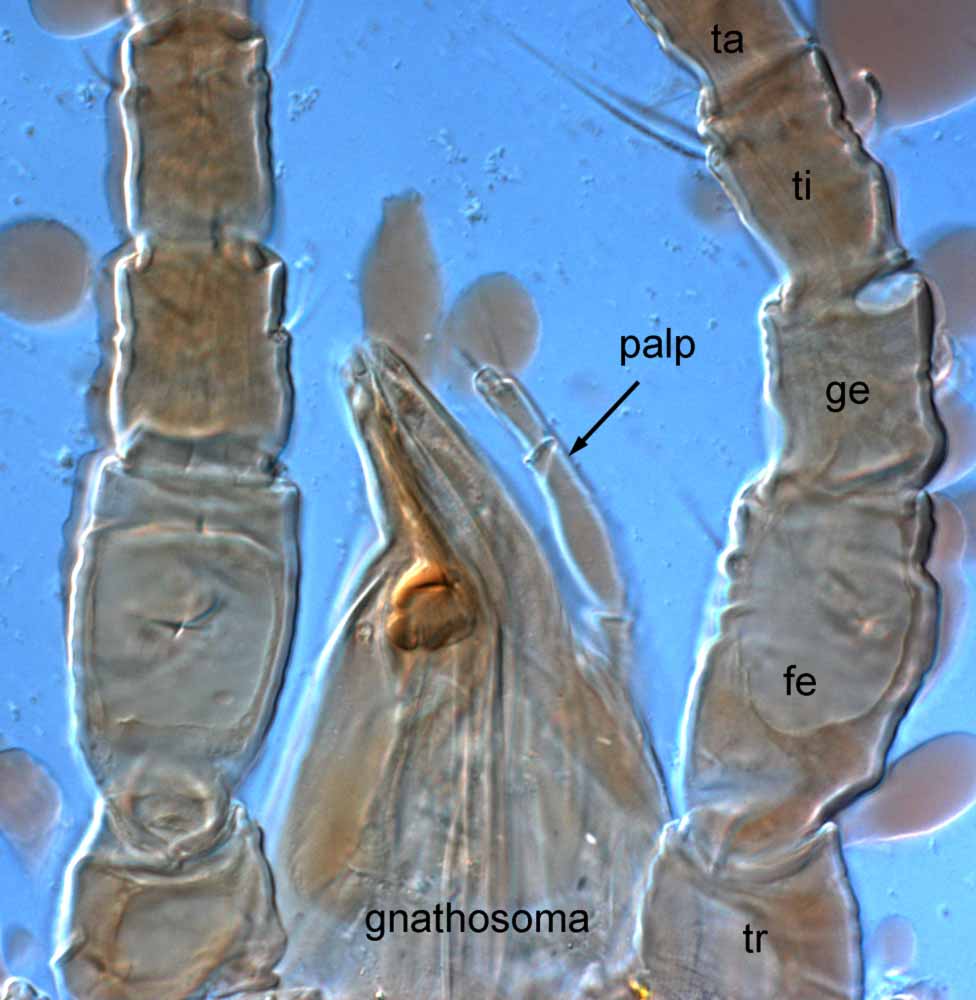Brevipalpus frankeniae
|
Fig. 1. Brevipalpus frankeniae female dorsum (paratype). |
|
Fig. 2. Brevipalpus frankeniae female prodorsum (paratype). |
|
Fig. 3. Brevipalpus frankeniae female prodorsum (paratype). |
|
Fig. 4. Brevipalpus frankeniae female prodorsum (paratype). |
|
Fig. 5. Brevipalpus frankeniae female dorsal anterior opisthosoma (paratype). |
|
Fig. 6. Brevipalpus frankeniae female dorsal anterior opisthosoma (paratype). |
|
Fig. 7. Brevipalpus frankeniae female posterior dorsum (paratype). |
|
Fig. 8. Brevipalpus frankeniae female posterior dorsum (paratype). |
|
Fig. 9. Brevipalpus frankeniae female posterior venter (paratype). |
|
Fig. 10. Brevipalpus frankeniae female posterior venter (paratype). |
|
Fig. 11. Brevipalpus frankeniae female venter between coxae III-IV (paratype). |
|
Fig. 12. Brevipalpus frankeniae female gnathosoma and legs I (ventral view; paratype) - indicating elongate palps + palp tarsus with only 1 seta (solenidion) (tr = trochanter; fe = femur; ge = genu; ti = tibia). |
|
Fig. 13. Brevipalpus frankeniae female gnathosoma and legs I (ventral view; paratype) - indicating elongate palps (tr = trochanter; fe = femur; ge = genu; ti = tibia). |
Authority
Baker, Tuttle and Abbatiello
Species group characters
The only species in the B. frankeniae species group (sensu Baker & Tuttle 1987) = f2 present; tarsus II with 1 solenidion; dorsal central setae (c1, d1, e1) similar in shape to dorsal lateral setae (c3, d3, e3); palp 4-segmented with 1 distal seta (= solenidion); palp tarsus very small and difficult to distinguish.
Characters
- opisthosomal setae f2 present (= 7 setae around opisthosomal margin)
- tarsus II with 1 solenidion distally (antiaxial)
- prodorsum with large irregular cells centrally; with longitudinally elongate cells laterally (Figs. 1-4)
- dorsal opisthosoma cuticle between c1-c1 and d1-d1 reticulate with fused cells (Figs. 5, 6); cuticle from d1-d1 to near the posterior margin with characteristic series of short transverse folds (Figs. 1, 5-8); sublateral cuticle around posterior body margin with series of folds/bands (Figs. 7, 8)
- ventral plate mostly smooth with some weak wrinkles laterally and posteriorly (Figs. 9, 10)
- genital plate with large cells, slightly transversely elongate (Figs. 9, 10)
- ventral cuticle mostly smooth, with some weak wrinkles surrounding the coxae and anterior to ventral plate (Fig. 11)
- spermatheca duct visible; vesicle not visible
- palp femur seta thin, tapered, barbed
- palp tarsus very small, with only 1 seta (= solenidion) (Fig. 12)
- palp tibia with 2 very long setae (can be confused as tarsus setae); seta on palp femur short, tapered, lightly barbed
- palps and gnathosoma elongate, extending beyond femur leg I (Figs. 12, 13)
- trochanter III with 2 setae
Distribution based on confirmed specimens
Mexico
Hosts based on confirmed specimens
Frankenia palmeri (Frankeniaceae)
Remarks
The palp tarsus is a very small segment, often difficult to distinguish from the tibia. The species was originally described with a 3-segmented palp.
References
Baker, Tuttle & Abbatiello 1975; Baker & Tuttle 1987

